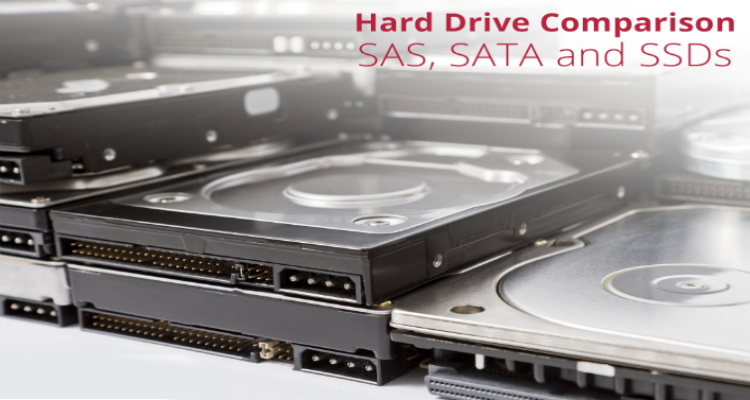Choosing the right hard drive for storage on your dedicated servers and transaction of your business data plays a pivotal role in stable and smooth functioning of your business.
Decision making for storage infrastructure and disk performance always depends upon the usage requirements of business, on dedicated host server. Majorly, the deciding factors for storage disks are capacity, speed and cost; read in the same order.
So, before we discuss further on which is the better drive on dedicated hosting server hardware machine, amongst the SSD, SAS and SATA, we must first understand about these three different form of drives, their utilities, their advantages and disadvantages. It will help you compare these disk technologies to arrive on the right decision.
SSD, short for Solid State Disk is a storage device known for its great performance and has zero mechanical moving component.
Advantages of SSD Drives on Dedicated Hosting:
- It works very fast with an unbeatable speed as it contains no moving parts
- It requires low operational cost because it is less prone to any mechanical damage
- It consumes lesser power hence lesser heat emission resulting into low carbon footprint
- It's a no-noise disk
Disadvantages of SSD Drives:
- The first and foremost drawback of SSD is its higher cost than other drives
- Although SSD can be relied for its high levels of performance but they are more likely to succumb to current fluctuations and power loss
- If idle, SSD consumes more battery powers in laptops
SAS is short for Serial Attached SCSI. It connects directly to the disk drive in a point-to-point interface and it functions on dual port; so if there is any controller failure, the redundancy remains high, delivering an uninterrupted performance.
Advantages of SAS Drives on Web Servers:
- High level of performance with 15000RPM, resulting into a greater bandwidth for better dive performance
- SAS provides flexibility in terms of customizing the configuration and is highly compatible as disk drive interface controller can be plugged directly to disk drive
- SAS is priced very low in comparison to SSD
- SAS has higher scalability as it has the capacity to scale more than 100 drives in contrast to that of only 600mb of SSD
Disadvantages of SAS Drives:
- SAS comes at higher costs than SATA
- Power and physical space consumption is higher in SAS in comparison to SSD technology
- SAS delivers lesser level of sustainable performance when compared to SSD
SATA, short for Serial ATA connects to mass storage devices like optical drives or hard disks, via a bus interface
Advantages of SATA HDD on Servers:
- SATA has the biggest advantage of lower costs in comparison to SAS and SSD
- SATA has the storage capacity of 3TB which is higher than SAS and SSD.
Disadvantages of SATA Drives:
- SATA only provides 7200 RPM of rotational speed which is lesser than even half of that of SAS.
- The lower level of speed leads to lower performance.
- SATA requires separate SATA port on the computer motherboard whereas SAS and SSD can be connected to multiple devices with optical drive and hard disk drives.
After assessing all the advantages and disadvantages of these disk technologies, and matching them with your storage requirement, you can wisely decide upon which one is the most suitable in meeting the storage resource optimization on dedicated host server.

